


Assam, is one of the eight northeastern states of India, with rice being an important crop to the people of the state, both as a means of food and livelihood. The state spans across a total geographic area of 78523 sq. km where rice is cultivated in approximately 2.54 Million ha. Assam is endowed with a rich diversity of rice cultivars. The crop is grown in wide and diverse situations both in Brahmaputra and Barak valleys, as it is the staple food for 3.16 crore population of Assam. It is grown across the districts with different terrains; from hill slopes of Karbi Anglong to deep water areas of Dhemaji.
The state hosts a number of premium quality rice varieties / specialty rice varieties which are region centric to Assam. Premium quality is defined on the basis of nutritional benefits (vitamin and mineral contents), softness (soft and shiny, and soft when chewed), long and slender grains, whiteness, translucency, aroma and high head rice (HR) recovery (minimal or no broken grains) in Southeast Asia (Thailand, Vietnam and Philippines), and by the physical appearance of the non-sticky texture, extra-long to long-slender grains (very fine to fine grains, uniformity, whiteness, slenderness), satiety, and aroma in South Asia (India, Bangladesh, Nepal and Sri Lanka). These trends are found to be consistent with industry perceptions and have important implications for regional and national breeding programs in terms of tailoring germplasm to regions, and rice varieties to specific local market segments.
Assam is known for cultivating and producing the fragrant and aroma rich variety called Joha. This variety is specific to the northeast region of India and is also cultivated by the farmers of Garo hills of Meghalaya.
Most of the specialty rice/ premium quality rice varieties found in Assam are traditional varieties. These specialty rice varieties of Assam can be grouped as Bao or red rice, Bora rice, Joha rice, Chokuwa rice and black rice.

Joha rice is known for its sweet unique aroma, superfine kernel, good cooking qualities, with excellent palatability and taste. It contains a good quantity of phenolic compounds and flavonoids having a good source of antioxidants. The grain type of Joha rice generally ranges from short-slender/bold to medium-slender/bold. Joha rice is invariably grown by the farmers to make desserts such as kheer (payas), pulao and other forms of delicacies.
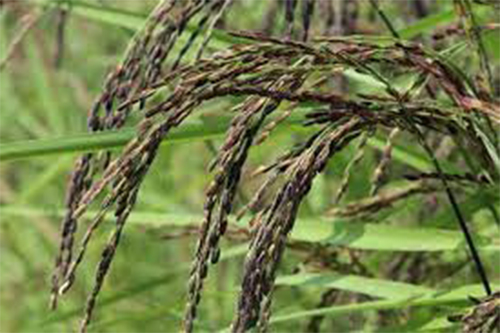
It is one of the popular traditional Joha rice varieties having taller height and prone to lodging.
Read More..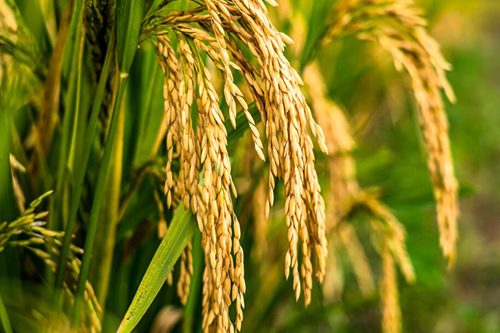
Kon Joha varieties (Kunkuni Joha, Maniki Joha and Madhuri Joha) grow well on medium land
Read More..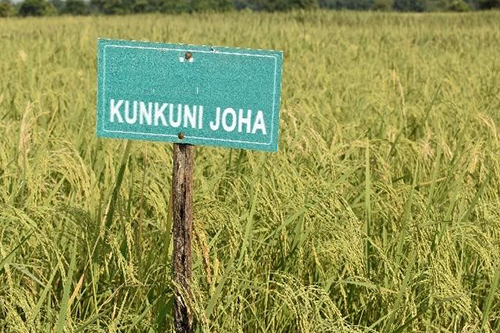
It is a traditional Joha rice variety suitable for rainfed shallow lowland and grown in Sali season.
Read More..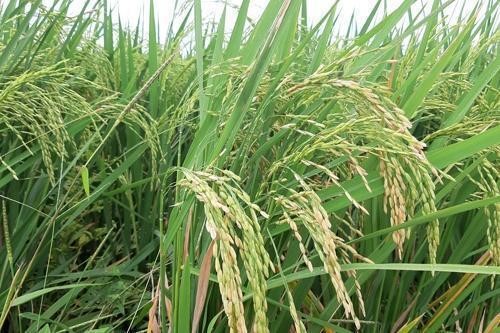
It is an improved aromatic (scented) rice variety developed by Assam Agricultural .
Read More..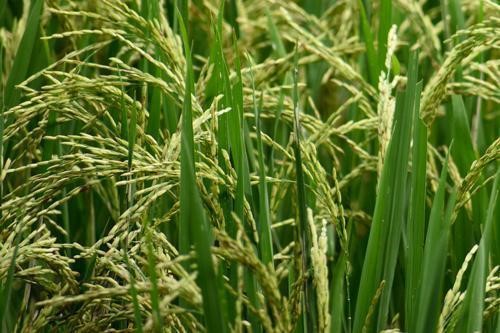
It is an improved aromatic (scented) rice variety developed by Assam Agricultural
Read More..
Black rice has been grown since 140 BC and owing to its novel and highly beneficial attributes, it is now taking a large share on the world stage as a superfood. This rice with a thin layer of black bran, is gaining popularity for its high levels of antioxidants and superior nutritional value. Black rice, also called ‘Forbidden rice’ or ‘Emperor's rice’, earned its name because it was once reserved for the Chinese emperor to ensure his health and longevity, and forbidden to anyone else. It is known to prolong life, thus, is also called ‘Long-life rice’. Research shows that black rice is considered as the twenty-first century ‘Superfood’ that provides a wide range of health benefits along with inherent calorie and nutritive value.
Black rice comes in several forms - short grain, long grain and glutinous varieties similar to brown rice with a slightly nutty flavour, smooth and firm texture, and not at all sticky like most white rices. The pericarp (outer covering) of this rice is black due to the presence of a high amount of anthocyanin that acts as antioxidant in the body.
When cooked, the colour lightens into a deep purple/violet colour hence, it is also known as “purple rice”. This unusual colour makes it popular for dessert.
Nutritive value of black rice is superior to any other rice. This rice is free of gluten, cholesterol, and low in sugar, salt, and fat. It is a whole grain, super nutritious type of rice that is high in antioxidants, vitamin B-complex and E, iron, manganese, magnesium, molybdenum, phosphorus and a good source of protein, fiber and complex carbohydrates. It is estimated that 50g of black rice provides 35% of RDA (Recommended Dietary Allowances) of selenium, copper, zinc and magnesium per day. Quality and quantity of protein in black rice is higher than any other rice varieties. Being a naturally good source of iron, it is excellent for those who are concerned about getting enough iron on a plant-based diet.
Black rice is a useful therapeutic agent for the treatment and prevention of diseases associated with chronic inflammation, obesity (weight management), prevention of cardiovascular disease, cancer and diabetes, reducing allergies, prevention of constipation and anemia, betterment of liver health, skin-, eye- and hair-care, and immunity build up.
Black rice is grown in the Sali season. Manipuri black rice variety was first brought under cultivation by one of the farmers from lower Assam - Mr. Upendra Rabha. Some people in lower Assam recognize this variety of black rice by his name (Upendra rice). The grain-type of black rice is either medium-bold or long-bold. The yield potential is between 3.5 and 4 tons per hectare.
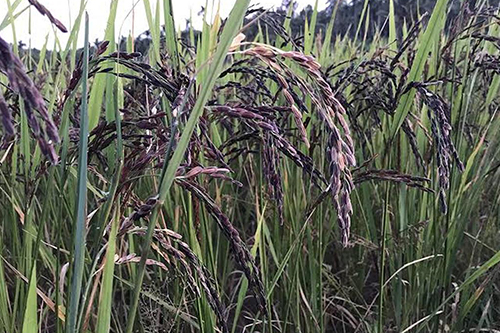
It is a traditional rice variety having its origin in Manipur. This variety is 130-140 cm tall and matures in 140-150 days.
Read More..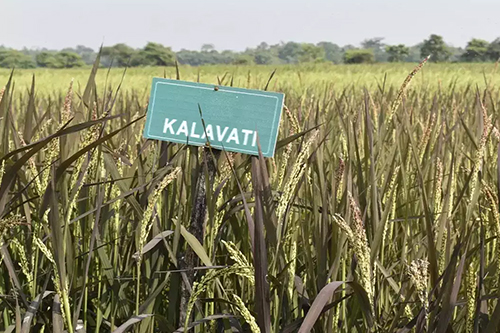
It is a traditional rice variety having its origin in Manipur. This variety is 130-140 cm tall and matures in 140-150 days.
Read More..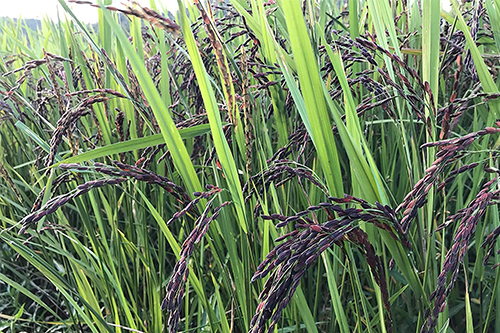
It is a traditional rice variety of Odisha. The plant is 110-130 cm tall and matures in 120-130 days.
Read More..Black rice farming is low water consuming, labor-intensive, and traditionally grown organically using young seedlings singly spaced and typically hand-weeded with special tools.
Traditionally, black rice is cultivated under rainfed condition by direct seeding in the months of June-July and harvested in October-November. In general, the black rice landraces possess higher stress tolerance. Farmers do not apply chemical fertilizers in black rice fields because such applications enhance vegetative growth and cause lodging which increases the production of chaffy grains. In general, black rice cultivation needs less ploughing, weeding and care compared to other rice varieties. No severe disease or pest attack has ever been observed on all the landraces of black rice, whereas other rice varieties are susceptible to insect-pests and diseases such as rice bug, stem borer, thrips, green caterpillar, rots, leaf blight, and false smut. This could be attributed to high phenolic and anthocyanin contents in black rice landraces.

Bora rice or sticky rice or waxy rice or glutinous rice is grown in Sali season. It has ˂5% amylose content. The grain of the sticky rice or waxy rice or glutinous rice is opaque and cooked sticky due to its chemical constituent known as amylopectin, a component of the starch ‘Boka’. Traditionally, many items including pithas (biscuit-like confectionaries) chira (flaked rice), hurum (expanded waxy rice), Sunga chaol (roasted rice inside bamboo internode), Sandohguri (fried rice powder) and rice beer are made from this rice. The grain type of sticky rice is medium-bold to medium-slender. The yield potential of Bora rice is 2 - 4.5 tons per hectare. Ronga Bora, Bokul Bora, Jenguni Bora, Aki Bora, Mou Bora, Moina Bora, and Goria Bora are the indigenous waxy rice varieties. Aghoni Bora and Bhogali Bora are high yielding varieties of glutinous rice.
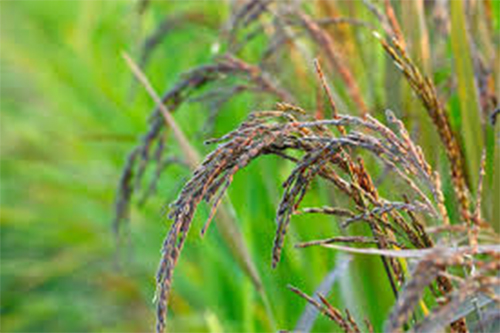
It is an improved Bora rice variety. It is suitable for the kharif/Sali season in Assam.
Read More..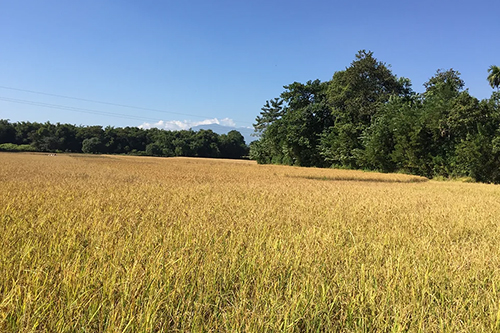
It is an improved rice variety suitable for the kharif/Sali season in Assam. The grain
Read More..
Red Rice is popularly known as deep-water paddy or bao rice, as it is cultivated on low, swampy lands and flood-prone areas. This variety of paddy has a unique tolerance to stress, which is not possible for any other paddy variety. The seedlings can withstand drought-like conditions. During May-September, which is the rainy season (flood season in Assam), this paddy shows the unique ability to grow rapidly with the rising water level. It was Prof Handique’s research team who for the first time studied and reported the presence of anthocyanin in ‘red rice’ from Assam as early as 2008. The study, published in Indian Journal of Plant Physiology, was widely acclaimed by the scientific community associated with rice research. While most varieties exhibit a white pericarp, local farmers traditionally grow rice varieties with a red pericarp, which are preferred over white rice because of their supposed higher nutritional value and market potential. Red rice contains higher amounts of iron, fiber, zinc, protein, magnesium, phosphorus, selenium, thiamine, niacin, manganese and other micronutrients.
Assam has approximately 100,000 ha area under deep water rice (DWR) cultivation (Rohilla et al. 2019). It is cultivated primarily in the Brahmaputra valley of Assam. Substantial bao or red rice growing areas are in Dhemaji, Lakhimpur, Sivasagar and Majuli districts. The deep-water and floating rice are grown in some low lying areas of Kamrup, Nalbari, Barpeta, Goalpara and Morigaon districts.
Bao rice is grown in April/May and harvested in Nov/Dec. The grain type is medium-bold. The yield potential is 1.5 to 2.0 tons per hectare. Some indigenous red rice varieties are as follows:
Bao paddy variety suitable for North Bank Plain, Upper Brahmaputra and Central Valley Zones of Assam.
Bao paddy variety suitable for North Bank Plain and Upper Brahmaputra Valley Zones of Assam
Improved bao paddy variety suitable for North Bank Plain Zone of Assam. This variety is early maturing (185 days) and escapes urfa disease.
Bao paddy variety suitable for North Bank Plain Zone of Assam.
Bao paddy variety suitable for North Bank Plain Zone of Assam.
Bao paddy variety suitable for Upper Brahmaputra, Central Brahmaputra Valley and Lower Brahmaputra Valley Zones of Assam.
Bao paddy variety suitable for Central and Lower Brahmaputra Valley Zones of Assam.
Bao paddy variety suitable for Barak Valley Zone of Assam
Bao paddy variety suitable for Barak Valley Zone of Assam.
It is an improved rice variety suitable for well adapted flood-prone, semi-deep water (50-100 cm). This variety was recommended for cultivation in Assam in 2015. The duration of this variety is 240 days when direct-seeded and 186 days when transplanted. The average grain yield of this variety is 3.0 t/ha. This rice variety possesses red kernelled medium-slender grain, and is prone to lodging, resistance to shattering, responsive to fertilizer application, suitable for normal/late sown condition, and tolerant to flood, submergence and intermittent drought.
Low lying areas having higher land submergence because of recurrent flood, suitable for growing normal Sali rice where water level goes up to 1.0 meter are suitable for growing this rice variety. It is also an improved rice variety and recommended for semi-deep-water in flood-prone areas (50-100 cm water depth) of Assam in 2015. The duration of this variety ranges from 230-240 days when direct-seeded through broadcasting in a lowland area and ranges from 180-200 days when transplanted in a medium lowland area. This variety is non-lodging, resistant to shattering, responsive to fertilizer application, suitable for normal sown condition. It is aromatic, possesses medium slender (MS) grain, and tolerant to submergence. The average grain yield of this variety is 2.6 t/ha.
It is semi-deep-water (50-100 cm) rice with red kernelled medium slender (MS) grain tolerant to ufra nematode infestation. The duration of this rice variety is 240 days when direct-seeded through broadcasting in a lowland area and 186 days when transplanted in a medium lowland area. The average grain yield of this variety is 3.0 t/ha. This variety is prone to lodging, resistance to shattering, responsive to fertilizer application, suitable for normal/late sown condition and tolerant to flood, submergence and intermittent drought.
It is suitable for semi-deep-water (50-100 cm) situations in flood-prone areas of Assam. It possesses white kernelled medium-slender (MS) grains. The duration of this variety is 240 days when direct-seeded through broadcasting in a lowland area and 186 days when transplanted in a medium lowland area. The average grain yield of this variety is 3.0 t/ha. The variety is prone to lodging, resistance to shattering, responsive to fertilizer application, suitable for normal/late sown condition, and tolerant to flood, submergence and intermittent drought.
The seed cleaning should be done in salt solution (200g salt/litre of water). To check the concentration of the solution, put an egg or a potato till it floats. After that, seed should be poured into the solution for cleaning. The light or diseased seeds, which float on the prepared solution, are removed. The seeds settled at the bottom are collected and washed 3 times with plain/normal water to remove any remnant salt from the seed.
After selection, seed should be soaked for 24 hours directly in fungicidal suspension using Carboxin @ 2.5 g/litre of water for treating 1 kg seed, and thereafter incubated for 48 hours before they are soaked for final germination.
Put seed in container and add Carboxin @ 2.5 g/kg seed. Mix fungicide thoroughly with seed by agitating them for five minutes.
March- April
Ahu + bao mixtures in the ratio of 4:1 (60 kg Ahu + 15 kg bao seed/ha)
Monocrop bao is recommended.
75 kg/ha for both situations (mixture and monoculture) when manually broadcast. To attain a uniform crop-stand and save seed-cost, it is recommended to go for mechanized direct seeding of rice (MDSR) with drum seeder using a seed rate of 40 kg/ha.
25 cm x 25 cm..
Application of neem coated urea at 30 kg N/ha in two equal splits as basal and at maximum tillering stage is recommended.
Neem coated urea can be prepared by mixing 50 kg urea with 500 ml neem oil over a polythene sheet till uniform yellow is obtained. As an alternative to neem coated urea, application of 4% urea solution as foliar spray at maximum tillering sage (150 DAS) at 30 kg N/ha is recommended.
The common diseases of ahu rice are blast, sheath blight, bacterial leaf blight, brown spot and bakanae disease.
To control rice pests, erect 50 ‘T’-perches per ha 2 ft. (60 cm) above crop canopy as roosting sites for insectivorous birds. These perches are to be removed before flowering to prevent the activity of granivorous birds.
Apply dry poison baits in bait stations (broken earthen pot, coconut shell, bamboo cylinder etc). Before application of poison baits, pre-baiting is essential to attract the rats. Pre-bait can be prepared using 1 kg cereal + 20 kg vegetable oil + 10 g dried fish and may
| 1 | Atta or wheat bran or maize crush | 80 |
| 2 | Gur | 10 |
| 3 | Fried or dried fish | 5 |
| 4 | Bromellion | 5 |
For control of plant parasitic nematodes in endemic areas, Cartap hydrochloride (30 kg/ha) should be applied 5-7 days after sowing.

Chokuwa rice- also known as soft rice or Boka rice or magic rice, is a unique type of rice variety which can be consumed without cooking, i.e. it’s a zero-fuel rice. The rice simply needs to be soaked in water for 20-30 minutes before consumption. It is versatile and can be consumed with milk, curd, jaggery, coconut, sugar or molasses, salts, oils, pickles, vegetables, etc. It is grown in the Sali season. The amylose content of Chokuwa rice is 10-15%. Komal chaol is prepared from this class of rice in Assam.
Saru Chokuwa, Bor Chokuwa, Bora Chokuwa, Boga Chokuwa, Boka Chokuwa-1, Boka Chokuwa-2, Chokuwa-6, Haru Chokuwa, Kagoli Chokuwa, Kalomdani Chokuwa, Lahi Chokuwa, Maju Chokuwa-1, Maju Chokuwa-2, Malbhog Chokuwa, Nepali Chokuwa, Sam Chokuwa, Pozo Chokuwa, Kagoli Chokuwa and Paro Chokuwa are traditional chokuwa rice. The grain type of Chokuwa rice is medium-bold to medium-slender. The yield potential of Chokuwa rice is 2 - 2.5 tons per hectare and it matures in 160 days. The average plant height of these rice varieties is 158 cm. Management practices is similar to management practices of Joha rice varieties.
Humans have been modifying crops for favorable traits since agriculture was invented thousands of years ago. But conventional breeding takes multiple generations and cannot be used to improve on only one specific trait. Genetic engineering and genome editing are precise technologies that can streamline the breeding process and introduce rice traits that cannot be significantly improved through conventional breeding.
Biofortification is the process of improving the nutritional quality of food crops. This can be achieved through agronomic practices, conventional breeding or biotechnology-based approaches like genetic engineering and genome editing. Biofortification of staple crops such as rice is intended as a sustainable, cost-effective and food-based means of delivering target micronutrients to populations who do not have access to or cannot afford diverse diets and other existing interventions such as fortified foods and supplementation.
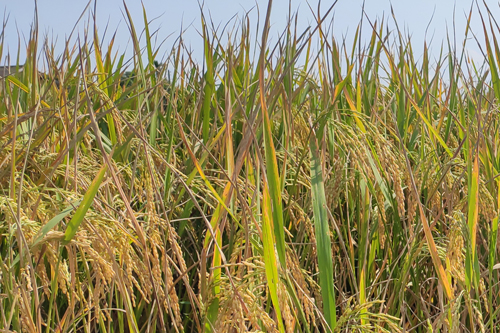
It is the first high zinc variety notified at national level. It is rich in zinc (22.6 ppm)
Read More..
It is rich in zinc (25.2 ppm) in polished grains in comparison to 12.0-16.0
Read More..

It is a protein-rich rice variety. It contains 10.5% protein in polished grain.
Read More..
It is rich in protein (10.1 %) and zinc (20.1 ppm) in polished grains in comparison
Read More..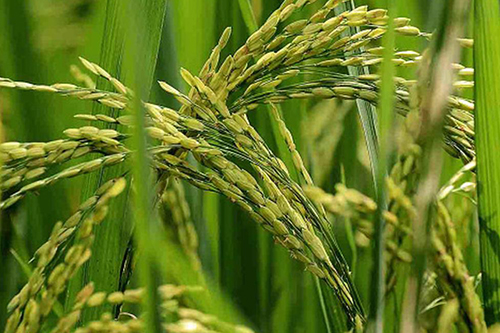
It is rich in zinc (24.9 ppm) in polished grains in comparison to 12.0-16.0
Read More..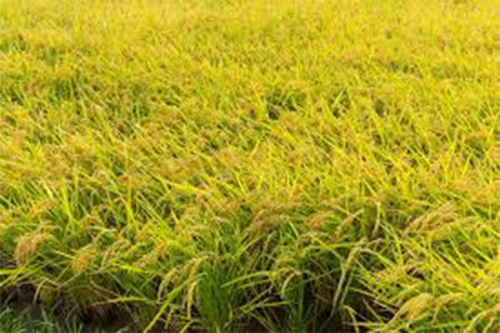
It is also called Telangana Sona and has good cooking quality, this variety is resistant to blast,
Read More..Jorhat, PIN - 785013 Assam